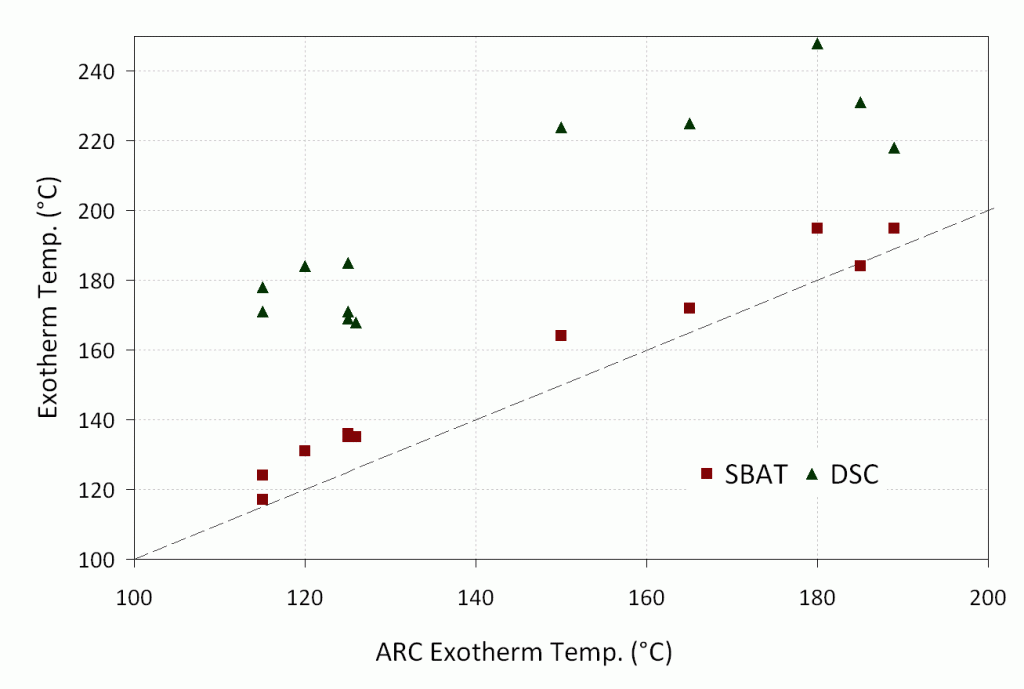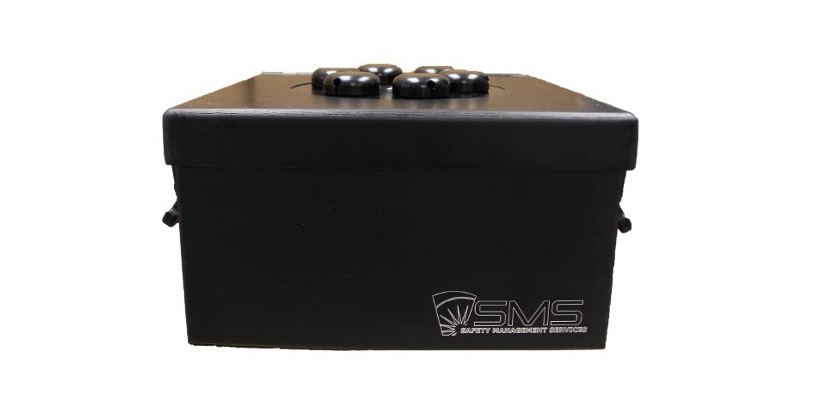SMS Simulated Bulk Auto-Ignition Test (SBAT) Apparatus
예상치 못한 폭주 발열 반응 사고(runaway exothermic reaction)는 인명 피해나 사망, 막대한 복구 비용, 그리고 향후 더 큰 규모의 비용을 초래할 수 있습니다. 고에너지 물질의 열 반응성을 이해하면 예상치 못한 고에너지 사고를 예방할 수 있습니다. 고에너지 물질을 안전하게 취급, 가공, 저장 및 운송하는 데 중요한 두 가지 특성은 벌크 임계 반응 온도와 벌크 자연 발화 온도입니다.
임계 반응성 온도 또는 임계 온도는 물질이 자가발열로 인해 결국 발화할 수 있는 주변 매질의 온도입니다. 벌크 자연발화 온도(벌크 AIT)는 물질이 단시간 내에 상당한 양의 에너지를 방출하기 시작하여 발화하는 시료의 온도입니다. 이 두 가지 특성을 이해하면 주변 온도가 임계 온도보다 높을 때 벌크 AIT에서 에너지 분해가 발생하는 것을 방지하기 위해 물질의 온도를 모니터링하여 안전한 활용과 보관 또는 운송을 보장할 수 있습니다.
- 재료의 임계 온도(critical temperature)와 벌크 자가 발화 온도(bulk auto-ignition temperature)를 결정
- 재료를 안전하게 취급, 가공, 저장 또는 운송할 수 있는 온도를 결정
- Bulk critical reactivity temperature와 bulk auto-ignition temperature 측정
임계 온도와 자연 발화 온도를 결정하는 데에는 DSC, SBAT, ARC를 포함한 여러 방법이 있습니다. 특정 방법을 선택할 때 고려해야 할 중요한 변수는 샘플 량, 최소 검출 가능 발열 속도(또는 가열 속도), 단열 성능입니다. 샘플 크기는 샘플(특히 분말 형태)에 유지되는 열이 샘플에서 주변으로의 열 전달 속도 변화로 인해 더 많을수록 더 커질 수 있으므로 중요합니다. 벌크 재료의 거동을 더 잘 측정하려면 더 많은 샘플량을 시험하는 것이 가장 좋습니다. 샘플량 의존성과 밀접한 관련이 있는 것은 가열 요소와 샘플 사이의 온도 변화의 최소 검출 가능 속도와 크기입니다. 더 높은 가열 속도는 고에너지 재료에서 자주 발생하는 자체 발열을 가릴 수 있습니다. 또한 샘플과 환경 사이의 단열 수준은 시험의 정확도와 감도에 영향을 미칩니다. DSC, SBAT, ARC의 세 가지 기법에 대해 샘플량, 검출 가능한 발열 속도의 차이점은 아래 표와 같습니다.

Because of the level of thermal isolation, increased sample size, and confinement, the ARC test apparatus is widely used and regarded to give the most accurate results in determining the auto-ignition and critical reactivity temperatures, particularly for auto-catalytic materials. Additionally, unlike the DSC and SBAT, the ARC doesn’t merely increase the temperature at a prescribed rate but checks the temperature difference between the sample and heating element and attempts to match the temperature of the sample after a given time during an exothermal event. Such a ‘heat-wait-search’ mode results in a very accurate estimate of how the material will behave in a bulk, well-insulated configuration. In comparison, due to the differences described above and in the table above, the experimental DSC auto-ignition temperature (AIT) can be elevated more than 50°C over the bulk AIT found using the ARC apparatus. The below plot shows the comparison between the auto-ignition temperature found with the DSC, SBAT and ARC for a range of different energetic materials. Note that the SBAT agrees with the ARC within 9 degrees Centigrade on average.

Some of the disadvantages of the ARC include its high operating cost, long sampling time, and slow turnaround. The SBAT apparatus was developed to drastically reduce the sampling time and sample turnaround while still maintaining an accurate determination of bulk material behavior. The SBAT can test 5 samples simultaneously and the experimental AIT temperature found ~9°C above the AIT value of the ARC. In many cases, the SBAT is the ideal test apparatus to identify bulk critical reactivity and auto-ignition temperatures due to the number of ports, the rugged features, and the amount of insulation.
The SBAT apparatus contains 6 ports or test chambers (including 1 reference test chamber) arranged in a circular configuration in an aluminum block containing three 600W cartridge heaters. 3-5 grams of a sample can be loaded into each sample chamber, a thermocouple is then inserted into the sample, and the chamber is then closed with a vented cap. Depending on the test, the sample then undergoes heating at a rate of 0.2 °C/min or the sample can be tested isothermally at a given temperature.
The ramped temperature test can yield the temperature at which exothermic or endothermic events occur under conditions of low heat loss from the sample. Isothermal test can be run to determine the critical temperature, or the temperature at which given an infinite storage time the sample will not react violently.

